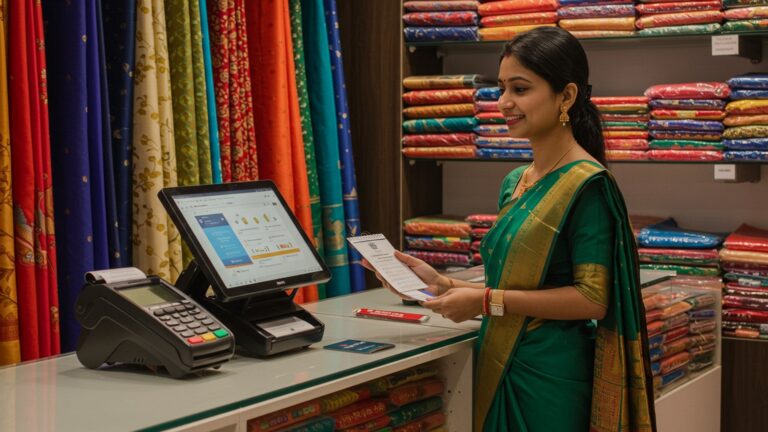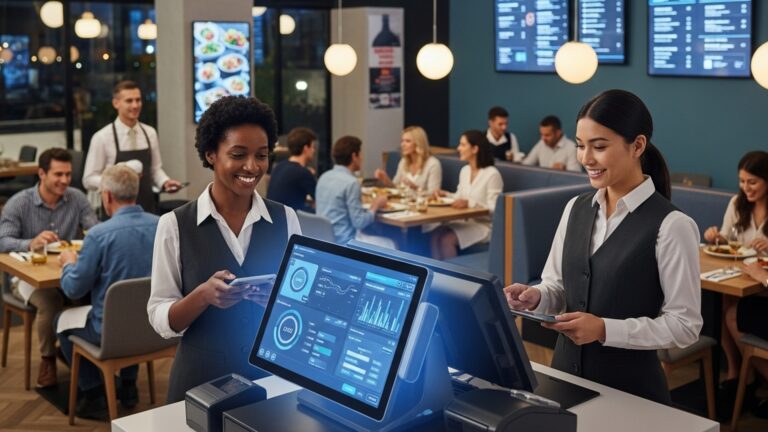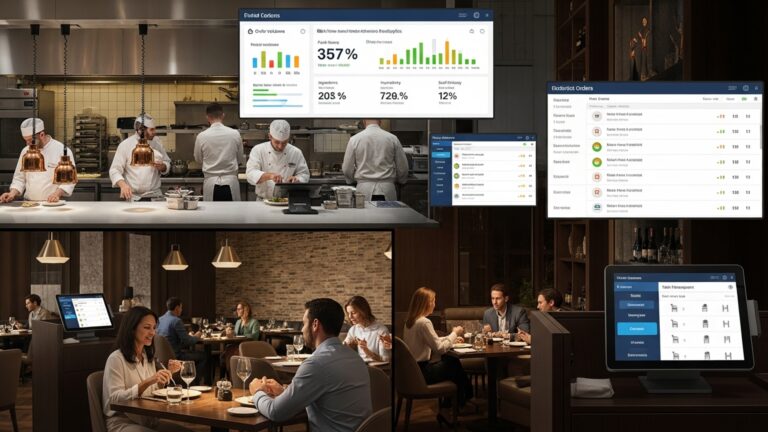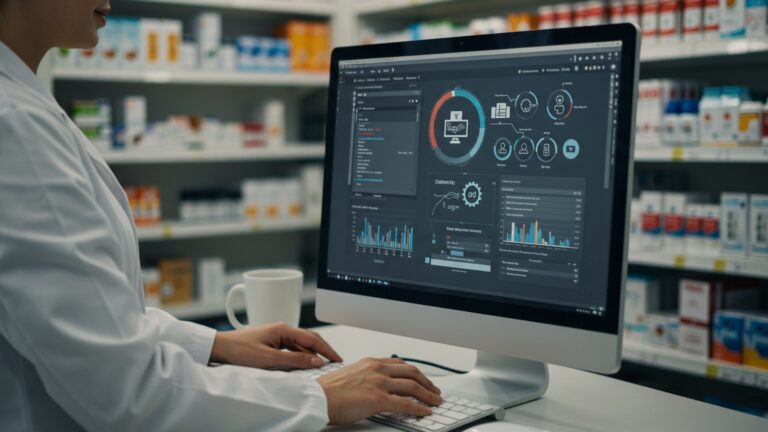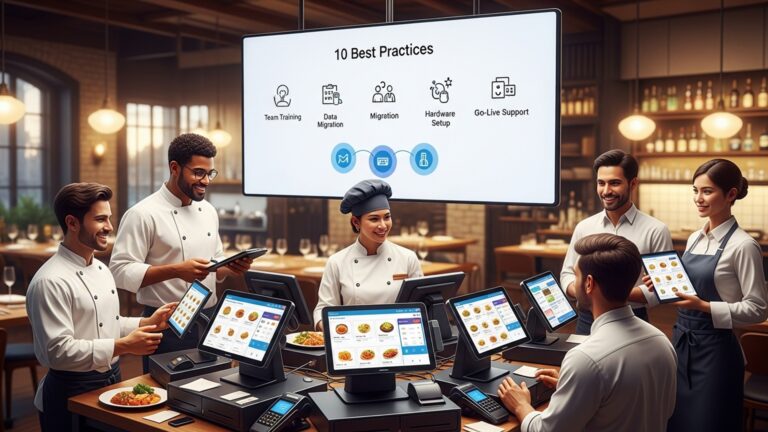How to Choose the Best Restaurant POS System 5 Essential Factors
Navigating the modern restaurant landscape demands more than just great food; it requires seamless operational flow and insightful data to thrive. Today’s restaurant owners face escalating labor costs, dynamic supply chains. an ever-evolving customer expectation for convenience, from QR code menus to integrated online ordering. A robust restaurant POS software system is no longer a mere transaction processor but the central nervous system powering everything from efficient kitchen display systems (KDS) to real-time inventory management and personalized loyalty programs. Choosing the right platform means balancing advanced features like AI-driven sales forecasting with crucial integrations for delivery services and payroll, ultimately shaping your establishment’s profitability and guest satisfaction in this competitive market.
Understanding the Core: What is Restaurant POS Software?
Before diving into selection criteria, it’s crucial to comprehend what a Point-of-Sale (POS) system truly is, especially in the context of a restaurant. At its heart, Restaurant POS software is the central nervous system of your establishment, managing everything from order placement and payment processing to inventory tracking and customer relationship management. It’s no longer just a cash register; modern POS solutions are sophisticated platforms designed to streamline operations, enhance customer experience. provide invaluable business insights.
Think of it this way: when a customer places an order, the POS system records it, sends it to the kitchen display system (KDS), calculates the bill, processes the payment. even updates inventory levels in real-time. Without a robust POS, these processes would be manual, error-prone. incredibly inefficient. For restaurant owners, choosing the right Restaurant POS software is one of the most impactful decisions they’ll make, directly affecting profitability, operational flow. customer satisfaction.
Factor 1: Seamless Integration Capabilities
In today’s interconnected restaurant landscape, your Restaurant POS software shouldn’t operate in a silo. Its ability to seamlessly integrate with other critical business tools is paramount. Imagine a system where your online orders automatically flow into the kitchen, your sales data instantly updates your accounting software. your inventory adjusts with every dish sold. This level of integration eliminates manual data entry, reduces errors. provides a holistic view of your business.
- Online Ordering & Delivery Platforms
- Inventory Management
- Accounting Software
- Customer Relationship Management (CRM) & Loyalty Programs
- Employee Management & Payroll
A top-tier POS system will integrate directly with popular third-party delivery services (e. g. , DoorDash, Uber Eats) and your own branded online ordering platform. This means orders appear directly on your POS, reducing the need for multiple tablets and manual order input.
Integration here is a game-changer. Every sale depletes inventory. a connected system automatically updates stock levels. This helps prevent stockouts, reduces waste. streamlines ordering from suppliers.
Connecting your POS to accounting platforms like QuickBooks or Xero simplifies bookkeeping immensely. Sales, expenses. payroll data can be transferred automatically, saving hours of manual reconciliation.
Integrated CRM allows you to track customer preferences, purchase history. manage loyalty points directly through the POS. This enables personalized marketing and rewards, fostering repeat business.
Time clock data from the POS can integrate with payroll systems, simplifying wage calculations and scheduling.
When evaluating Restaurant POS software, create a list of all existing software and services your restaurant uses. Ask potential POS providers about their specific integrations and request demonstrations of how these connections work in practice. A well-integrated system is an investment that pays dividends in efficiency and accuracy.
Factor 2: User-Friendliness and Staff Training
The best Restaurant POS software in the world is useless if your staff can’t operate it efficiently. Restaurants are fast-paced environments with high staff turnover, making ease of use and rapid training crucial. An intuitive interface means fewer errors, faster service. happier employees.
- Intuitive Interface
- Customizable Workflows
- Training Time
- Error Prevention
Look for a system with a clean, logical layout. Buttons should be clearly labeled. common tasks (like taking an order, splitting a bill, or applying a discount) should be accessible with minimal taps. A good test is to see if someone with basic tech literacy can navigate it after a brief introduction.
Can you customize the order-taking process to match your restaurant’s specific flow? For example, adding mandatory modifiers for certain dishes or setting up quick-access buttons for popular items.
How long does it take for a new employee to become proficient? Systems with straightforward design can often be learned in minutes or hours, not days. This significantly reduces training costs and gets new hires contributing faster.
Does the system have built-in safeguards to prevent common mistakes, such as accidentally ringing up the wrong item or forgetting to apply a discount?
I recall working with a busy cafe owner who switched from an older, complex POS to a modern, tablet-based Restaurant POS software. The immediate impact was astounding. What used to take new baristas days to grasp now took less than an hour. Order accuracy improved. customer lines moved faster, directly translating to increased sales during peak hours because staff spent less time fumbling with the system and more time serving customers. This isn’t just about convenience; it’s about operational speed and customer satisfaction.
Insist on a hands-on demo for your staff, not just for management. Observe how quickly they pick it up and identify any areas of confusion. Consider systems that offer role-based access, allowing different staff members (e. g. , servers, bartenders, managers) to see only the functions relevant to their job, reducing clutter and potential errors.
Factor 3: Comprehensive Features and Scalability
A great Restaurant POS software should offer a robust set of features that address your current needs while also being scalable to support future growth. Don’t just think about today; consider where your restaurant might be in 3-5 years.
Essential Features to Look For:
- Order Management
- Payment Processing
- Reporting & Analytics
- Inventory Management
- Customer Management
- Employee Management
Efficient order entry, table management (for dine-in), split checks, item modifications. the ability to send orders directly to the kitchen or bar.
Support for various payment methods (credit/debit cards, contactless payments, mobile wallets), secure transactions. EMV compliance.
Detailed sales reports, labor cost analysis, inventory reports, peak hour analysis. customer spending habits. These insights are invaluable for making informed business decisions.
Track ingredients, recipes. finished goods; receive alerts for low stock; and manage supplier orders.
Build customer profiles, track purchase history. manage loyalty programs.
Time clock, shift scheduling, performance tracking. permission settings.
Scalability Considerations:
- Cloud-Based vs. On-Premise
- Multi-Location Support
| Feature | Cloud-Based Restaurant POS Software | On-Premise Restaurant POS Software |
|---|---|---|
| Data Storage | Servers hosted by the provider (internet required) | Local servers at your restaurant |
| Access | Anywhere, anytime with internet connection | Typically restricted to restaurant network |
| Updates | Automatic, seamless | Manual, requires IT intervention |
| Upfront Cost | Lower (subscription model) | Higher (hardware & software license) |
| Maintenance | Handled by provider | Your responsibility |
| Scalability | Easier to add terminals, locations | Can be complex, requires hardware upgrades |
Cloud-based solutions generally offer superior scalability, allowing you to easily add more terminals, expand to multiple locations, or integrate new features without significant hardware investment. This flexibility is critical for growing businesses.
If you foresee opening additional branches, ensure the Restaurant POS software can centrally manage multiple locations, providing consolidated reporting and unified menu management.
Prioritize features that directly address your current pain points and future aspirations. If you plan to expand, a cloud-based, multi-location capable system is almost always the better long-term choice. Don’t pay for features you’ll never use. also don’t choose a system that will limit your growth.
Factor 4: Hardware Compatibility and Reliable Support
While the software is the brain, the hardware is the body of your Restaurant POS software. Compatibility, reliability. the availability of robust customer support are non-negotiable for smooth operations.
- Hardware Options
- Terminals
- Tablets (e. g. , iPads, Android tablets)
- Kitchen Display Systems (KDS)
- Printers
- Payment Devices
- Reliable Customer Support
- 24/7 Availability
- Response Time
- Support Channels
- Onboarding & Training
Traditional countertop terminals are robust and ideal for high-volume transactions.
Offer mobility, allowing servers to take orders tableside, process payments. engage with customers more directly. Handheld devices can significantly speed up service.
Essential for modern kitchens, displaying orders digitally, improving communication. reducing paper waste.
For receipts, kitchen tickets. bar orders.
Card readers, NFC readers for contactless payments.
Ensure the POS software is compatible with a range of reliable hardware. Some providers offer proprietary hardware, while others allow you to use off-the-shelf devices. Proprietary hardware can offer tighter integration but might lock you into a specific vendor. Off-the-shelf options can be more flexible but require careful compatibility checks.
Restaurants operate outside standard business hours. If your system goes down during a busy dinner rush, you need immediate assistance. Look for providers offering 24/7 phone, chat, or email support.
How quickly do they respond to critical issues? Ask about their guaranteed response times for different severity levels.
Do they offer self-help resources, knowledge bases. video tutorials in addition to direct support?
Does the provider offer initial setup assistance and training for your staff? This can be invaluable for a smooth transition.
A high-end restaurant I consulted for initially chose a cheap Restaurant POS software with limited support. During their grand opening, a critical payment processing module failed. With no immediate support available, they resorted to manual credit card imprints and cash-only service, creating a chaotic and embarrassing experience for both staff and customers. The cost savings on the POS system were quickly overshadowed by lost sales and damaged reputation. This underscores the importance of reliable support as a core operational pillar.
Test the provider’s support before committing. Call their support line with a few technical questions and gauge their responsiveness and helpfulness. Also, discuss hardware warranties and replacement policies. Downtime is lost revenue.
Factor 5: Transparent Cost and Pricing Structure
The cost of Restaurant POS software isn’t just the sticker price; it’s the Total Cost of Ownership (TCO). This includes upfront costs, recurring fees. potential hidden charges. Understanding the pricing model thoroughly is essential to avoid budget surprises.
- Upfront Costs
- Hardware
- Installation & Setup
- Software License (for on-premise)
- Recurring Fees
- Subscription Fees (for cloud-based)
- Payment Processing Fees
- Support & Maintenance Contracts
- Add-on Features
- Hidden Costs to Watch Out For
- Contract Length
- PCI Compliance Fees
- Internet Service
Purchase price of terminals, tablets, printers, cash drawers. payment devices.
Fees for professional installation, network configuration. initial menu setup.
A one-time fee for the right to use the software.
Monthly or annual fees per terminal or per location. These often include software updates and cloud data storage.
This is a critical component. Providers may charge a percentage per transaction, a flat fee per transaction, or a combination. These fees can significantly impact your bottom line. Always compare rates and interpret the fee structure (e. g. , interchange plus, tiered pricing).
Some providers bundle support into the subscription, while others charge separately, especially for on-premise systems.
Certain advanced features (e. g. , advanced reporting, specific integrations, loyalty programs) might incur additional monthly fees.
Are you locked into a long-term contract? What are the penalties for early termination?
Some processors charge an annual fee to ensure your system adheres to payment card industry data security standards.
For cloud-based systems, reliable high-speed internet is a non-negotiable operational cost.
Request a detailed, itemized quote that breaks down all potential costs for a 1-year and 3-year period. Don’t hesitate to negotiate, especially on payment processing rates. Read the fine print of any contract, paying close attention to cancellation clauses and automatic renewals. A slightly higher upfront cost might lead to lower operational costs over time if the system is more efficient or has lower transaction fees.
Conclusion
Choosing the right restaurant POS system isn’t merely selecting software; it’s architecting the backbone of your establishment’s future. After evaluating the five essential factors, remember that this isn’t a one-size-fits-all decision. From personal experience, I’ve seen restaurants flourish when they deeply consider how a system’s scalability and robust integrations, especially with online ordering platforms, will meet not just today’s needs but tomorrow’s growth. With trends like AI-driven inventory and personalized customer experiences becoming standard, a future-proof system is paramount. Therefore, your actionable next step is simple yet crucial: pilot your top contenders. Don’t just rely on demos; try to run a small part of your operation on them. This hands-on approach reveals true user-friendliness and uncovers potential bottlenecks far more effectively than any spec sheet. Believe me, the right POS will do more than just process transactions; it will empower your team, delight your customers. ultimately drive your restaurant’s success. Embrace this selection process as an investment in your vision, not just an expense.
More Articles
How to Choose the Best POS System 5 Key Strategies for Restaurant Success
Learn 5 Key Steps to Choosing the Best Restaurant POS System
How to Choose the Essential POS System Features for Your Restaurant
Discover 7 Essential Restaurant POS Features to Boost Your Business Efficiency
What Are 6 Must-Have Restaurant POS Integrations for Modern Operations
FAQs
What’s the absolute most crucial thing a POS system should do for my restaurant?
At its core, a good POS needs to streamline your daily operations. This means efficiently taking orders, managing tables, processing payments. tracking inventory. If it doesn’t handle these basics smoothly, it’s probably not the right fit for your business.
My staff isn’t super tech-savvy. How vital is it that the POS is easy to learn?
It’s incredibly essential! A complicated system can slow down service, lead to errors. frustrate your employees. Look for intuitive interfaces and minimal training time so your team can get comfortable and productive fast.
I’m planning to open another location next year. Should my POS system be able to handle that?
Absolutely! You need a system that’s scalable. It should be able to expand with your business, whether you’re adding more terminals, new locations, or different service models, without forcing you to completely replace your system.
What hidden costs should I watch out for when buying a POS? I don’t want any surprises!
Beyond the upfront purchase price, always consider hardware costs, monthly software subscriptions, payment processing fees, installation services, ongoing support plans. even potential upgrade costs down the line. Ask for a clear, itemized breakdown of all potential expenses.
What kind of support should I expect from a POS provider? What if something goes wrong during a busy shift?
Reliable 24/7 customer support is non-negotiable in the restaurant industry. You need quick access to help for troubleshooting, technical issues, or questions, ideally via phone, chat, or email, to ensure your operations aren’t disrupted.
Are there any specific features that can really give my restaurant an edge over competitors?
Beyond the basics, look for features like integrated online ordering, robust loyalty programs, detailed sales analytics, kitchen display systems (KDS). comprehensive inventory management. These can significantly boost efficiency, customer engagement. your bottom line.
Can a POS system connect with my other business tools, like accounting software or delivery apps?
Yes. it’s a massive benefit! A good POS should integrate seamlessly with other platforms you use, such as accounting software (like QuickBooks), third-party delivery services, or staff scheduling applications. This prevents manual data entry and ensures all your business data is aligned.

